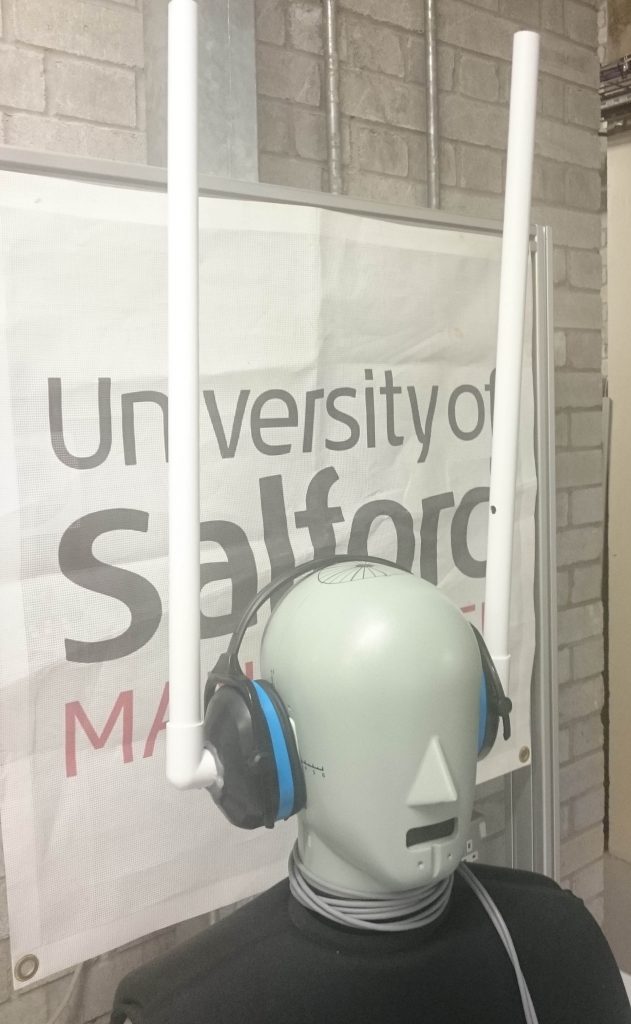Musical pipes

The sound has to pass through each pipe to reach the ears. What you hear is therefore altered by the resonances of the pipe. You can easily change the length of the pipe by covering over the holes (you can see one on the inside of the right pipe). The video below will give a sense of what it sounds like to use this in a noisy crowd.
What you need:
- 1x cheap pair of hearing defenders (e.g. only £6)
- 2x right angled joints (for 21.5mm overflow waste pipe)
- 2x length of 21.5 mm overflow waste pipe (e.g. 50cm)
- 1x large drill bit (26mm for the connectors we used)
- 2x drill bit for holes (e.g. 8mm)
- Plastic glue (e.g. from hot glue gun)
How to make it:
Pull the foam insert out of the ear defender. Carefully drill a hole in each of the ear defender cups. Push one right-angled connector into each of the cups. Glue the right angled connector into place (we used a hot glue gun). You need to make sure there is a good seal around the tube so sound doesn’t leak in. If that isn’t achieved by the glue, Plasticine can be used to ensure a seal. Cut a hole in the middle of the foam insert (for the end of the plastic connector) and put back in the cup.
Drill holes into the overflow waste pipe. We put one hole in the middle of one pipe, and another hole 3/4 way along the other pipe. Place the pipes into the right-angled connectors and enjoy!
The science
Like a recorder, the pipe in this device has a series of resonances. The sound reaches the ear through the pipe, so you’re listening through the resonances. Any parts of the crowd hubbub that are close to one of the resonant frequencies gets amplified. By changing the length of the pipe by covering over a tone hole, you change the amplified frequencies, and hence the whooshing changes. With the tone hole covered, you get a low frequency because the pipe is long. With the tone hole open, you get a higher frequency because it is the length of the pipe before the first hole that is important. It’s a bit like playing a recorder.
Below you can see what frequencies were present in the sound picked up by the microphones in the manikin’s ears. The red line is with the musical pipe device in place, showing how certain frequencies are boosted by resonance. You also have other higher frequencies attenuated as well. This colours the sound.

Spectrum showing how the sound changes with and without the device
2 Comments
Outreach event at school for the hearing impaired | Acoustical Society of America- Penn State Chapter · August 15, 2019 at 3:24 pm
[…] and cello while discussing string instrument design and mode shapes. They also got to try out confusaphones to show how much we rely on our hearing to localize our surroundings. The chapter had a great time […]
PSU ASA at Grange Fair 2019 – Ask a Scientist | Acoustical Society of America- Penn State Chapter · September 6, 2019 at 9:30 pm
[…] was excited to interface with a lot of kids & adults from the local area. We showed off the Confusaphones again, as well as demonstrated and explained the basic concepts behind Active Noise Cancellation […]